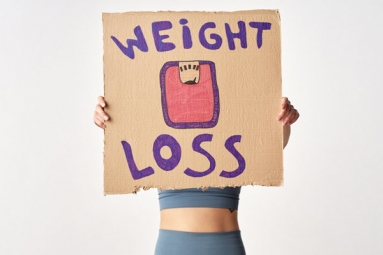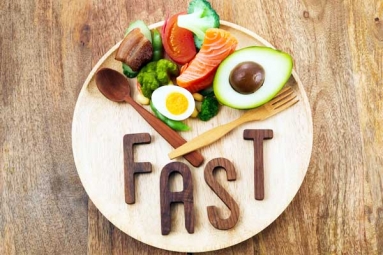
(Image source from: Canva.com)
When many individuals, including Indians, picture a breakfast setting and the foods on the table, bread often comes to mind, or at least it acts as a common element tying everything together. From the toast spread with butter or honey to the sourdough piece you may dip into poached eggs, the first meal of the day frequently focuses on bread. While most Indians may not choose bread for lunch and dinner, those who enjoy sandwiches, pizzas, burgers, or even healthier avocado toasts tend to eat more bread throughout the day. The challenge is that much of this bread eating brings up feelings of guilt, as bread tends to be seen as a cause of weight gain more than many other foods. Social media influencers have contributed to this perception, and now it’s common to see claims that eating bread can lead to issues ranging from weight gain to cancer.
However, nutrition research suggests a more helpful approach than simply criticizing a food staple: the type, portion, and combinations of what you eat are far more important than just having bread on your plate. Swapping out highly refined, low-fibre loaves for better-quality breads, and consuming them in appropriate combinations and amounts can fit into not just a balanced eating plan but also an effective strategy for weight loss or maintaining weight. This is supported by a study published in The Lancet in 2019, which highlights that carbohydrates are a crucial component of a well-rounded diet. The key concern should be the quality of the carbs. Comprehensive reviews and meta-analyses convey a consistent idea: it is the quality of carbohydrates, not just the amount, that predicts various health outcomes, including weight matters. Consuming more whole grains and other high-fibre, minimally processed carbs is associated with less long-term weight gain and a lower risk of cardiometabolic issues. This led significant reviews to suggest focusing on whole grains, legumes, fruits, and vegetables instead of broadly recommending low-carb diets.
Nevertheless, randomized studies show mixed outcomes. Some research, like the one published in the American Journal of Clinical Nutrition in 2014, indicates that diets rich in whole grains lead to slight reductions in body fat or better metabolic markers, while other studies display minimal differences in actual weight loss when calorie intake is controlled. The practical conclusion is that while good-quality whole grains are beneficial, losing weight still requires a balance of total calorie intake and sustainable eating habits. Thus, as long as the bread you consume is made with quality whole grains and has few preservatives, chemical additives, and processed sugars, you should be okay. Likewise, being mindful of portion sizes and ensuring bread is one part of a meal rather than the entire meal is also important. Some individuals may claim that not all types of bread are a concern, but rather white bread is the issue. This statement has some validity. Observational studies imply that a higher intake of refined white bread is linked to a greater chance of becoming overweight or obese in certain groups.
That connection probably indicates a trend: white bread usually appears alongside other processed foods and less fiber consumption, often leading to a higher glycemic load that can lead to increased hunger for some individuals. However, not all studies agree; for instance, research published in BMC Public Health in 2014 found no clear relationship when they considered overall diet quality. Nevertheless, opting for whole-grain or fiber-rich options is a safe choice that can yield significant benefits. Essentially, research so far shows that bread itself is not necessarily a villain, but what matters greatly is the type and amount consumed. If you are focused on losing weight and wish to know which types of bread you can include, here is a list:
Whole-grain breads: These types of bread contain more fiber, additional micronutrients, and provide greater satisfaction per slice. Research studies link a higher intake of whole grains to less weight gain over the years.
Sourdough and fermented breads: Some research indicates these breads may result in better blood sugar levels compared to regular white bread, which may reduce quick glucose spikes and help some individuals control their appetite. High-fiber breads that have been reformulated also show improvements in indicators like fasting glucose levels.
Rye and heavy, high-fiber loaves: Heavier breads with whole grains often lead to lower glycemic reactions and provide more fullness per calorie than light white breads.
If the previous information hasn’t persuaded you that bread is not harmful, consider this: "Are individuals in countries or areas where bread is mainly consumed all unhealthy and overweight?" From Germans and Turks to French and Italians, bread consumption is a longstanding and widespread tradition throughout Eurasia. While health challenges are worldwide and no nation is entirely healthy, we can learn from how these countries handle bread in their diets, which can also be beneficial for people in India. Here are a few suggestions to begin with:
Be mindful of portions: Two slices of whole-grain bread might contain between 180 to 250 calories depending on how thick they are. Combine them wisely rather than stacking them up. Keep in mind that bread is the carbohydrate component of the meal, but your plate should also include other macronutrients and micronutrients.
Combine with protein and healthy fats: Eating bread with foods like eggs, paneer or tofu, dal, peanut butter, avocado, and fresh fruits or vegetables slows down digestion and enhances fullness, making you consume fewer calories later. Studies on higher-protein, lower glycemic index diets show reduced hunger, even when weight loss is comparable.
Opt for fiber and check labels: Look for 3-5 grams of fiber per slice or more, whole grains as the first listed ingredient, and minimal added sugar. Breads that have been reformulated or fermented with added fiber demonstrate better metabolic outcomes. Also, make sure to check that your bread does not contain potassium bromate by reviewing the ingredients carefully.
Be cautious of "multigrain" claims: Multigrain can often imply a mixture of several refined flours. Look for "100% whole grain or whole wheat" or examine the ingredients. Use bread as a substitute, not an addition: Swap out other carbohydrates in your meals for bread. For instance, instead of having two chapatis or roti, or a fried treat, opt for a sensible sandwich. This approach, instead of adding bread to what you already eat, will be more beneficial.
If the bread you eat is highly processed, low in fiber, consumed in large quantities, or often accompanied by sugary spreads or fried foods, it can lead to increased calorie intake and make it tougher to lose weight. Moreover, people who often experience significant spikes in blood sugar after eating may feel more hungry with low-fiber breads. However, it’s about the overall eating habits, not just the bread itself. The key point is that bread is not an enemy for everyone. Choose good quality whole-grain or sourdough breads, be mindful of portion sizes, pair slices with proteins and healthy fats, and use bread as a replacement instead of an extra. Making these easy adjustments, backed by research studies and trials, allows you to enjoy bread while still working towards weight loss and health objectives.













